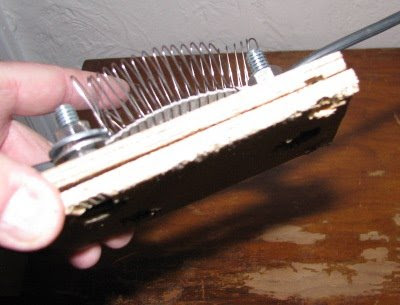You can find this graph here and they also say the following about the evacuated tube:
(Note -- it appears that the low efficiency of evacuated tubes at low delta temperatures is due to the fact that the SRCC uses the full area of the collector array when calculating performance, and the evacuated tube arrays have lots of open space that do not collect. This brings down their efficiency. If you calculate efficiency based on absorber area, the evacuated tubes are near 80% at the intercept. But, it seems to me that the SRCC is correct in basing the efficiency on the actual size of the array -- that's how much roof space it takes up).
So it appears that the evacuated tubes are only efficient when you look at the absorber area (the black inner tube area). But since there is space taken up by the outer glass shell and there is space between each tube in the array, then the effective efficiency goes down. If you are trying to boil water, then sure, these are great. But in my opinion, way too expensive for what you get in a normal water heating situation.
If you look at the unglazed part of the graph, this is like the pool heaters. They are just flat black plastic that the water flows through. They are really efficient when the outside air temp is close to the water temp.
What I propose is to use an inefficient design that doesn't raise the water temp very much. But the good part is the massive surface area that it utilizes. Most solar water collectors are between 10 and 30 square feet. I propose something like 800 square feet. Like the roof of your house.
Imagine using a homemade plywood water tank like here
http://www.builditsolar.com/Experimental/PEXColDHW/TankConstruction.htm . It is 160 gallon, but you could make it up to 300 gallons. It would store the water that is circulated to the roof. Inside the tank would be some PEX hose that goes to the pool pump and another length of hose that goes to the water heater in the house and a small circ pump for that. The pool has its own pump. You could also have a loop for a hot tub as well. The water that goes to the roof never comes in contact with the water that goes to the pool or hot water tank. It just transfers heat to it inside the plywood tank. In other words, the PEX tubing acts as a heat exchanger because it sits inside 160 gallons of hot water that is circulated to the hot roof and back again.
With the hot water tank, you might need to purchase an anti-scald valve because the water temp could get above 150F or so. On average you will probably see about 50 degrees F above ambient air temp on sunny days. But that is great for adding heat to the pool in the spring and fall. And good hot water for the house in the summer.
You could build a tank and get a pump for pushing water to the roof and a small circ pump for the house hot water and various piping for about $500. But a typical solar hot water device could be $2,000 up to $8,000. You could use a soaker hose at the roof peak or you could use a sprinkler head pointed at the right spot or however you would like to do it. But let's say you have a 20 foot by 40 foot area of the roof that gives you 800 square feet of heating area. This also helps cool your house in the summer.
At 70F sunny day and water temp at 100F, therefore 30F delta temp:
20 sq. ft flat plate - 65% eff. ==> 1209 watts of power
20 sq. ft evac. tube - 50% eff. ==> 930 watts
800 sq. ft roof area - 50% eff. ==> 37,000 watts
At 90F sunny day and water temp at 130F, therefore 40F delta temp:
20 sq. ft flat plate - 60% eff. ==> 1116 watts of power
20 sq. ft evac. tube - 48% eff. ==> 893 watts
800 sq. ft roof area - 38% eff. ==> 28,272 watts
At 70F sunny day and water temp at 130F, therefore 60F delta temp:
20 sq. ft flat plate - 55% eff. ==> 1023 watts of power
20 sq. ft evac. tube - 45% eff. ==> 837 watts
800 sq. ft roof area - 15% eff. ==> 11,160 watts
Of course you could get those flat black plastic pool heaters but it would take 8 of the big ones and about $2500 or more for 8 of those.
One problem with the rooftop waterfall heater is evaporation on the roof. I'm sure that even with that, just the sheer surface area will ensure massive amounts of heat being added. I'll have to test a small version and see how much evaporation affects it and how much make up water would be needed. But like they say, "Surface area is king". Another thing to consider is the color of your roof. A black roof will be much more efficient than a grey roof or a red roof, etc. Also, remember that the water is actually touching the hot surface. Unlike normal, where the heat has to transfer through a metal pipe or plastic just to get to the water.
Richard
























